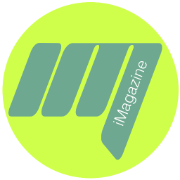Many businesses today print something either for one reason or the other. Before going into any printing industry, print solutions are several to choose from, and it’s crucial and
wise to develop a good understanding of each printing type. This will make you feel more realistic about your printing ideas.
Business Printing
Commercial Printmaking is a device that offers a variety of printing solutions to many business’s needs Such as flyers, leaflets, and brochures. Based on your printing options, there are multiple choices to opt for. These can range from large-format printing services or offset lithography. Don’t worry
About what it means, imagazine is here to help.
List of different types of commercial printing
Before making any print for commercial purposes, one needs to understand that every company’s needs are vital.
Digital Printing
The print technology uses no plates to transfer artwork onto the printing services its also referred to as “direct to press” or “print on demand”. Digital printing is faster as compared to the rest of the printing types.
Digital printing is the most sought-after due to its short runs, easy customization with extreme quality and color accuracy and consistency.
In a world where customers demand highly crafted solutions, only HP Indigo technology gives you the agility to meet any need across any type of commercial printing, labels, or packaging job.
Offset lithography
Offset Lithography is printing style that require jobs with high volume of printing. This type of printing Work by using printing plates that are inked and transferred onto a rubber blanket before finally being added onto the printing surface.
Flexography
The flexography printing process is ideal for packaging solutions this process is usually safe To be around food. The printing plates used in this process allows ink to dry quickly.
Flexographic engraves the flexible rubber before liquid ink floods its surface. The rest of the Is rolled out onto a rubber printing plate. The copy of the inked plate will transfer the artwork onto the page. However, this type can also make corrugated cardboard, envelopes, tape, and plastic surfaces.
Large-format printing services
Large format prints involve massive projects such as tradeshows and exhibition displays, banners vehicle wraps, panel walls, and billboards printed on durable materials like canvas, banner and flag materials.
Large format print style requires the following considerations.
- Optimize your image.
- Calibrate your screen.
- Use Photoshop’s Soft-Proofing feature.
- Convert your fonts into vectors.
- Save your file to the appropriate type.
- Use 300 dpi to receive the best quality.
Screen printing
This process involves a stenciled design that is transferred onto a flat surface with ink, a mesh screen, and a squeegee. Its widely used in T-shirt designs, plastic, glass, and wood.
Screen printing produces vivid colors and it is an efficient method for staff uniforms and sportswear.
3D printing
This sounds almost like a reality in that you take digital photos and then produce them the way they are. This process works by adding the thin materials down first in the form of metal, liquid, or powdered plastic then fusing everything together.
3d printing has finally enabled people to create kinds of stuff that were previously imagined.
UV LED
This process is eco-friendly in that it uses light rather than heat transfer items. The good thing about this is that the ink is able to dry quickly and you have a broad range of print applications. Businesses can save money here due to its durability which will eventually increase your operations and high productivity.





